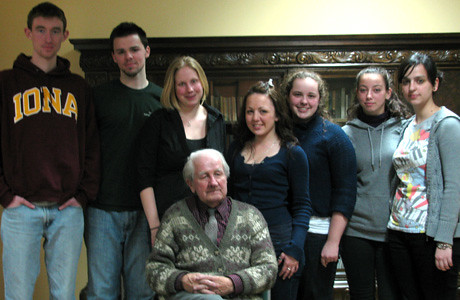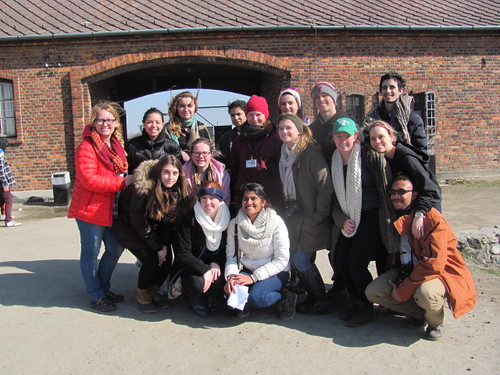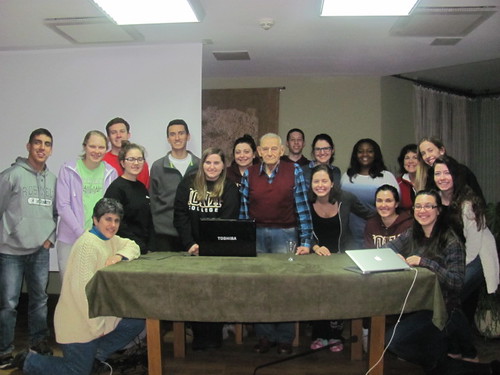The concept of the presence of absence and the absence of presence has been touched upon numerous times throughout the course Memory and Reconciliation: The Churches and the Holocaust. When pertaining to the Shoah, often people are aware that this devastation of a community occurred, but the discussion on how to move forward is lacking.

|
| Ghetto Heroes Square in Krakow |
The above photo was taken in Ghetto Heroes Square in Krakow. The Square contains an installation of thirty-three cast iron and bronze chairs. This memorial was resurrected in memory of the Polish Jews of Krakow that were imprisoned and murdered in the Krakow ghetto and German death camps during World War II. The chairs signify both the presence and absence of life. A standard, household object, typically filled with a living being stands empty for the rest of time. The Shoah took the lives of so many, leaving an emptiness in their place.
I found this memorial especially moving due to its location. The chairs were scattered out in the center of a busy market square. It has been over seventy years since the end of World War II, yet hundreds of people will pass this memorial every day and think for even just a moment about the weight of the lives lost. I believe this acknowledgement is an important factor in the recognition and prevention of such a tragedy never happening again.
Imagery seen such as Ghetto Heroes Square opens up an opportunity for dialogue on the topic. In a world where many may believe that since the Shoah ended, the time for discussion is over, memorials such as these go against this notion. To feel the presence of the absence of a community means that there are still emotions to be felt and words to be said on the subject. So, the absence of the presence of conversation is detrimental to the healing process.
In Poland, I had the privilege of meeting Fr. Manfred and listening to him lecture on different aspects of the Shoah. At the start of one of his lectures, he said “you cannot sit here and say you are for peace and do nothing” (Fr. Manfred, Center for Dialogue and Prayer). I believe this message should be shared in any situation where there are injustices occurring. It is so important to not become the bystander. Part of not being the bystander includes continuing the stream of dialogue. In order to end the absence of conversation, it is our responsibility to advocate for those who cannot advocate for themselves or join them in solidarity.
Fr. Manfred also taught us that “we need to trust one another, which is difficult when history proves otherwise. It can only happen through conversation” (Fr. Manfred, Center for Dialogue and Prayer). This statement reiterates the significance of the introduction and continuation of communication. History has revealed that silence only strengthens adversities, so only through trust, acknowledgement, and reflection can reconciliation begin.
The presence of absence and absence of presence indicates a broken cycle in society. The memorial of chairs in Ghetto Heroes Square is a step to heal that brokenness through acknowledgement of the lives lost in the Shoah. The installation and Fr. Manfred’s words taught me the importance of having a voice, and using its power to advocate.




















